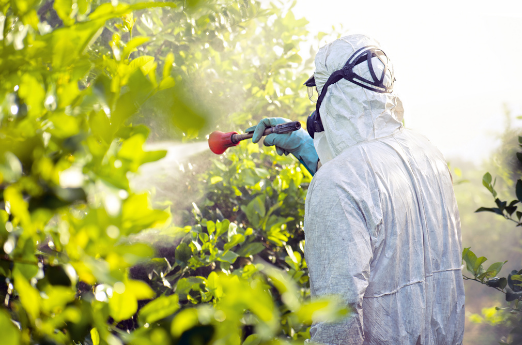
Pesticides and the EPA
Pesticides are monitored closely by agencies such as the United States Environmental Protection Agency (US EPA). Recently a widely used neonicotinoid insecticide, imidacloprid, has come into scrutiny. Imidacloprid is used mainly on agricultural land and gardens to battle pests and insects that can transmit plant diseases. However, imidacloprid has been targeted by many biologists and environmental groups because of its lethal effect on more than just its intended targets. Because of the widespread use of the pesticide, as well as its ability to leach easily, this poisonous chemical is affecting many aqueous environments.
Contamination of surface waters by Imidacloprid
Imidacloprid has a high mortality rate on many insects, including non-target species. According to a study done at Utrecht University in the Netherlands, imidacloprid has been found in and around surface waters across the Netherlands, and this has led to a decline in insect populations in surface waters. About 80% to 98.4% of the Imidacloprid that is applied to seeds does not make it to the intended target and remains in the environment. When Imidacloprid is applied to hard surfaces, such as lawns and turf, it can contaminate surface water through runoff and drainage. The contamination of surface waters with imidacloprid is dangerous because of its negative effect on invertebrate life. In fact, imidacloprid use in several European countries has already been suspended due to its effects on honey bees.
The US EPA Method 1699 and Organomation
Tests for pesticides such as imidacloprid are performed on environmental samples such as water and soil, as well as human samples such as blood and urine. Many researchers use analytical techniques to analyze these samples such as HPLC and mass spectrometry. It is often required to concentrate the samples and remove excess solvent before analysis can be successfully performed. The Organomation N-EVAP and MULTIVAP instruments are vital to these processes. The nitrogen blow down technology allows for quick and easy evaporation of excess solvent. The US EPA Method 1699, a method to analyze several different pesticides in water, soil, sediment, biosolids, and tissue by HRGC/HRMS, uses the Organomation N-EVAP nitrogen evaporator to concentrate extracts before analysis.
For a free quote please contact sales@organomation.com.
→ Next: Sample preparation for HPLC-MS/MS Analysis
Sources:
-
Van Dijk TC, Van Staalduinen MA, Van der Sluijs JP (2013) Macro-Invertebrate Decline in Surface Water Polluted with Imidacloprid. PLoS ONE 8(5): e62374. doi:10.1371/journal.pone.0062374
-
http://www.epa.gov/pesticides/about/intheworks/ccd-european-ban.html
